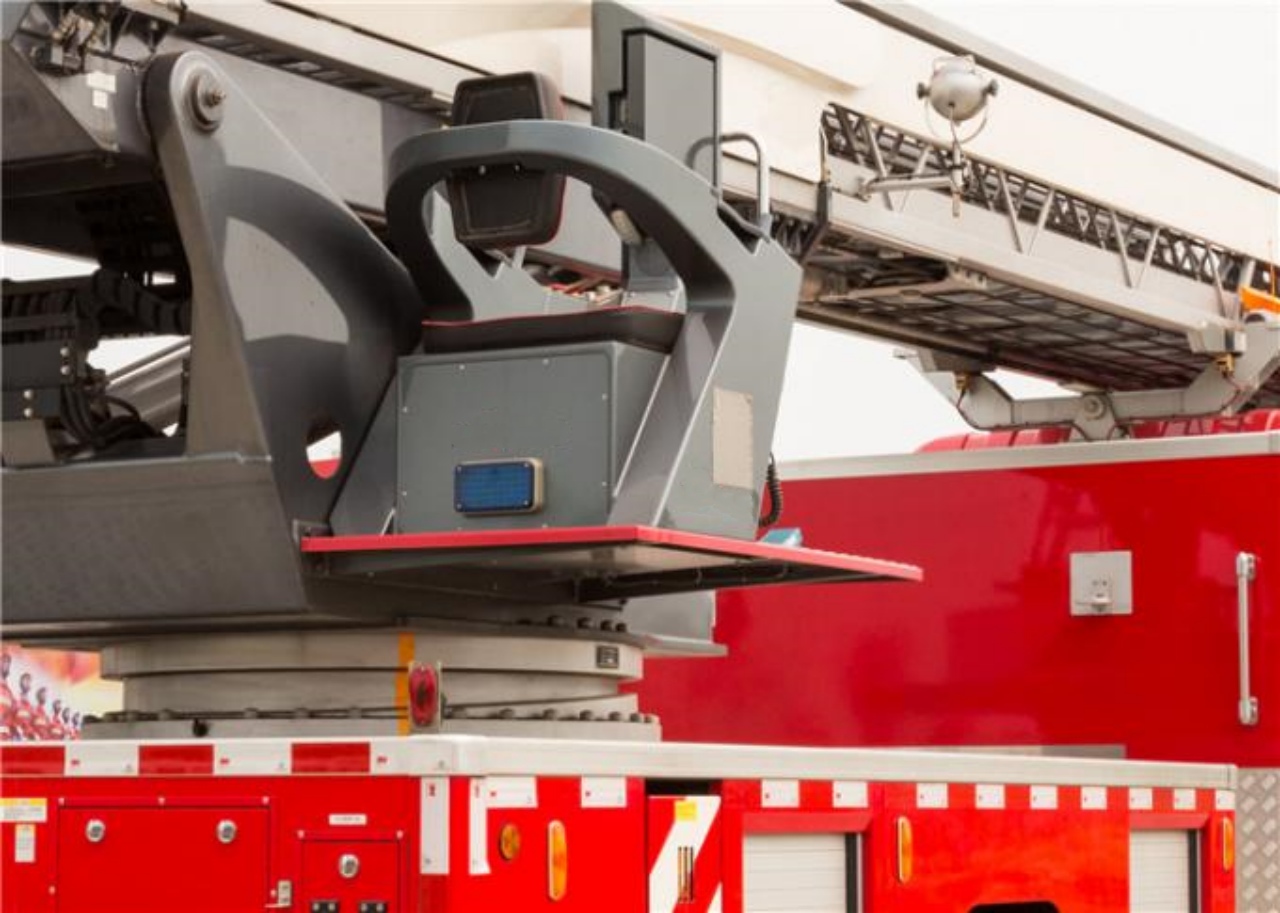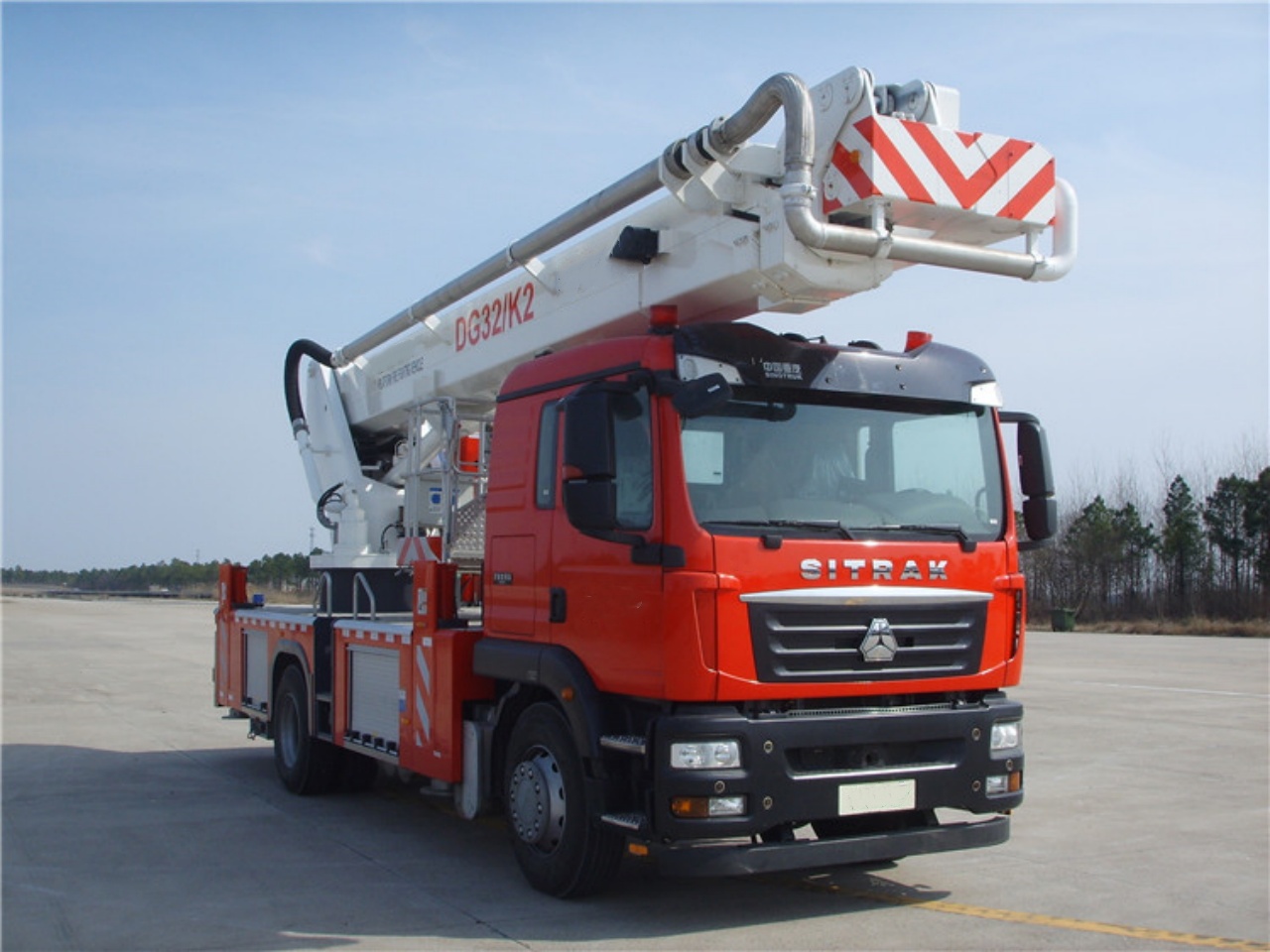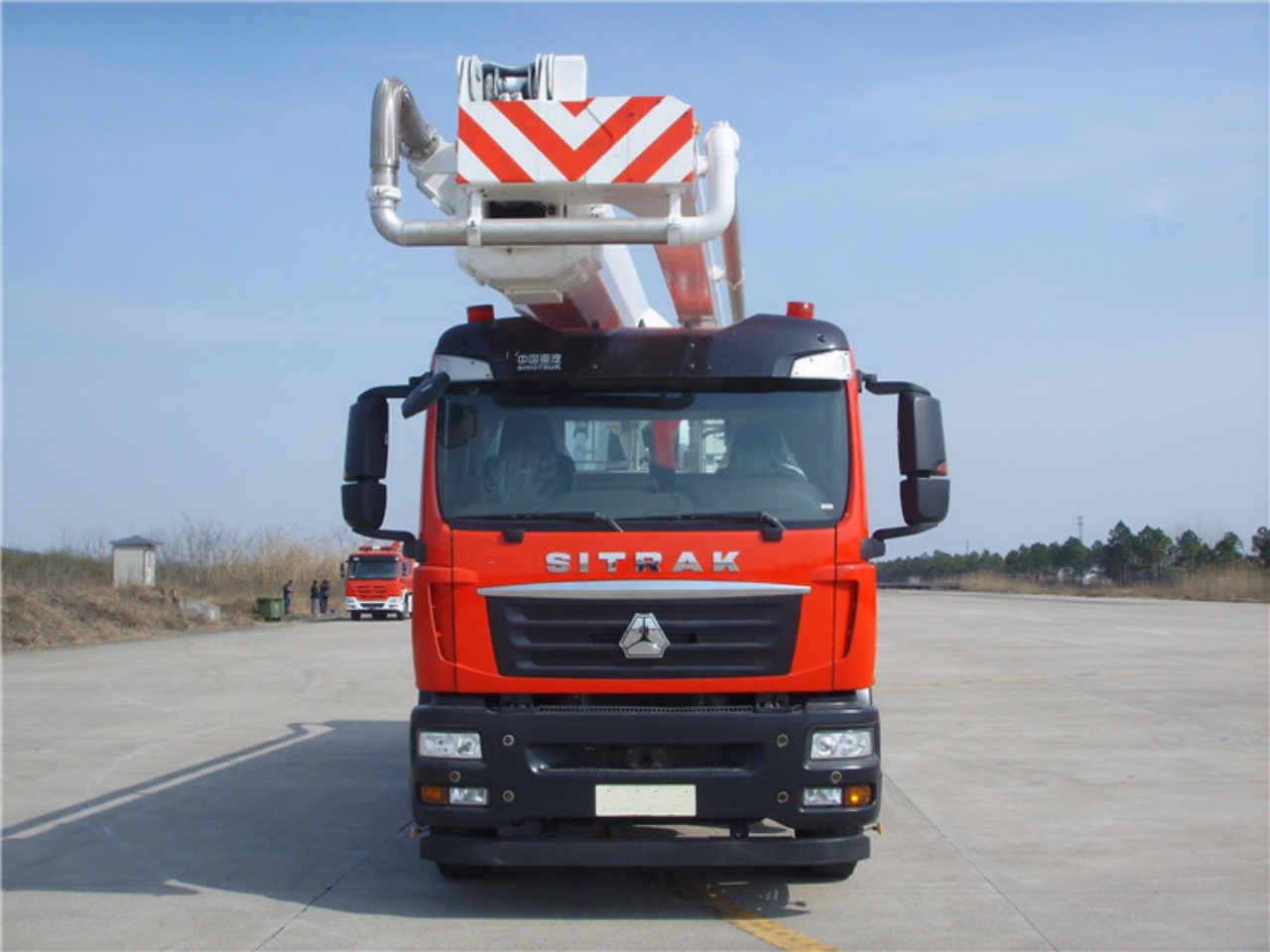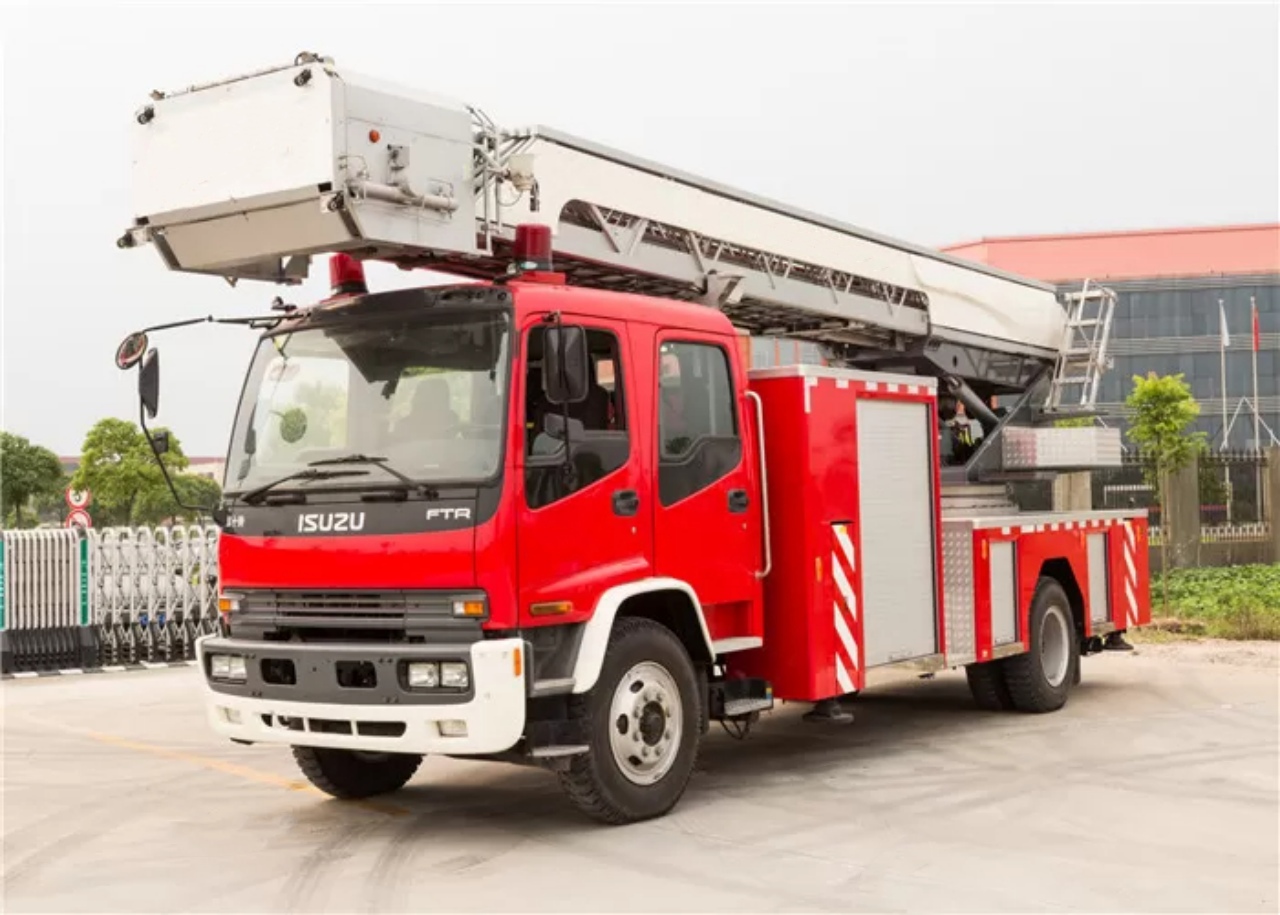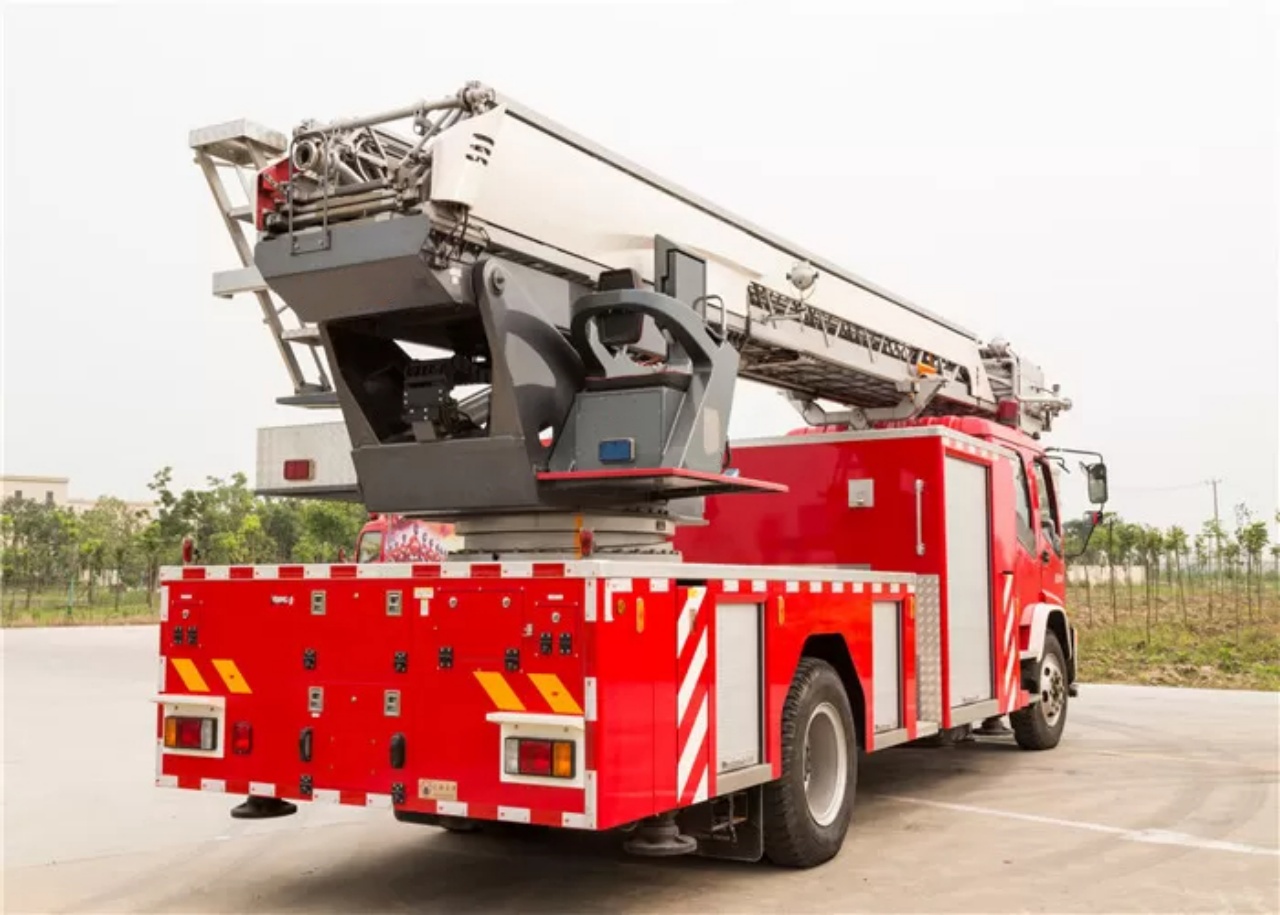Fire trucks are the backbone of firefighting operations, offering both mobility and essential tools to battle blazes and conduct rescue operations. Among the many types of fire apparatus in service today, ladder trucks and platform trucks stand out for their ability to provide aerial access during emergencies. While they might appear similar to the untrained eye, there are distinct differences between these 2 types of vehicles—differences that significantly impact how fire departments use them. Understanding these distinctions can offer insight into the strategic deployment of firefighting resources.
Overview of Aerial Fire Trucks
Both ladder trucks and platform trucks fall under the category of aerial apparatus. These vehicles are equipped with extendable booms that allow firefighters to reach elevated areas such as high-rise buildings, rooftops, and upper-level windows. They are primarily used for:
- Rescue operations
- Elevated water streams
- Ventilation
- Access to elevated structures
- Lighting and observation
Despite serving similar functions, the mechanical designs, capabilities, and safety features of ladder and platform trucks differ significantly.
What is a Ladder Fire Truck?
A ladder fire truck, also known as a straight stick ladder truck, is equipped with a long, extendable ladder mounted to a rotating turntable on the vehicle’s chassis. These ladders are typically made from aluminum or steel and can extend anywhere from 50 to 137 feet or more, depending on the make and model.
Key Features:
- Straight Ladder: No platform at the top—just rungs to climb.
- Compact Design: Generally lighter and faster to deploy.
- Quick Maneuvering: Better suited for narrow city streets.
- Rescue and Ventilation: Ideal for quick access to windows and roofs.
- Water Stream Capability: Often includes a pre-piped waterway or a detachable nozzle at the tip of the ladder.
Benefits:
- Speed: Easier and faster to position and extend.
- Reach: Offers excellent vertical and horizontal reach.
- Agility: More maneuverable in urban settings with tight roadways.
However, ladder trucks require firefighters to climb the rungs manually, which can pose challenges in high-stress or hazardous conditions.
What is a Platform Fire Truck?
A platform fire truck, also known as a tower ladder or aerial platform, incorporates a basket or platform at the tip of the boom. Instead of a straight ladder alone, it uses an articulated or telescopic boom with a secure working area for firefighters.
Key Features:
- Platform/Basket: Accommodates 2-4 firefighters plus equipment.
- Telescopic or Articulated Boom: Allows more flexible movement.
- High Load Capacity: Can carry more gear, personnel, and sometimes even victims.
- Integrated Controls: Operated via joysticks from the basket or base.
- Waterway System: Typically includes a master stream nozzle for elevated firefighting.
Benefits:
- Safety: Firefighters can work from within a secured basket, reducing fall risk.
- Rescue Efficiency: Easier to lift incapacitated victims from high elevations.
- Versatility: Ideal for large commercial structures and high-rise rescues.
- Comfort: Less physically taxing for firefighters compared to climbing ladders.
Platform trucks tend to be larger, heavier, and more complex, which may limit their deployment in areas with restricted access.
Functional Differences: Ladder vs. Platform
To understand their real-world differences, consider these key aspects:
| Feature | Ladder Fire Truck | Platform Fire Truck |
|---|---|---|
| Primary Access | Climbing ladder rungs | Standing in a basket/platform |
| Personnel Capacity at Tip | Usually 1-2 (climbing) | 2-4 on a platform |
| Reach and Movement | Straight line, excellent reach | Articulated/telescoping boom for flexibility |
| Rescue Capability | Moderate | High (especially for disabled or injured persons) |
| Water Delivery | Ladder tip nozzles, piped waterways | Platform-mounted master streams |
| Deployment Speed | Faster setup | Slower due to stabilizers and basket setup |
| Space Requirements | Smaller footprint | Requires more space for stabilization |
Use Cases in Real-Life Scenarios
Fire departments often choose between these trucks based on specific situational needs:
- Ladder Trucks are preferred in dense urban environments where quick access and rapid setup are crucial. Their ability to extend upward and outward rapidly makes them ideal for second- or third-story rescues and ventilation work.
- Platform Trucks are favored for complex rescues, large commercial fires, or operations that require prolonged aerial presence. Their stability and basket system make them excellent for long-duration water applications and for rescuing people who cannot climb down ladders themselves.
Maintenance and Crew Requirements
Platform trucks generally require more maintenance due to their hydraulic systems, electrical controls, and complex mechanics. The additional weight and length also mean greater driver training and special licensing in some jurisdictions.
Ladder trucks, while simpler in construction, still demand rigorous inspections, especially on their ladder sections, cables, and hydraulic systems. Crew training focuses more on manual climbing and positioning techniques.
Cost and Budget Considerations
When fire departments make purchasing decisions, cost becomes a significant factor:
- Ladder Trucks are typically less expensive to purchase and maintain.
- Platform Trucks, due to their advanced features and complexity, are costlier but offer enhanced capabilities.
Departments may opt for one over the other—or both—depending on the community’s risks and building profiles.
Conclusion
Both ladder and platform fire trucks play vital roles in modern firefighting and rescue operations. While they share the common goal of providing elevated access, their designs, capabilities, and ideal applications differ.
- Ladder trucks emphasize speed, maneuverability, and reach.
- Platform trucks focus on safety, rescue efficiency, and versatility.
Choosing between the 2 often comes down to the type of emergencies a department faces, the geographic area served, and the available budget. Ultimately, they are complementary tools in a fire department’s arsenal, each excelling in its niche while working together to save lives and property.
